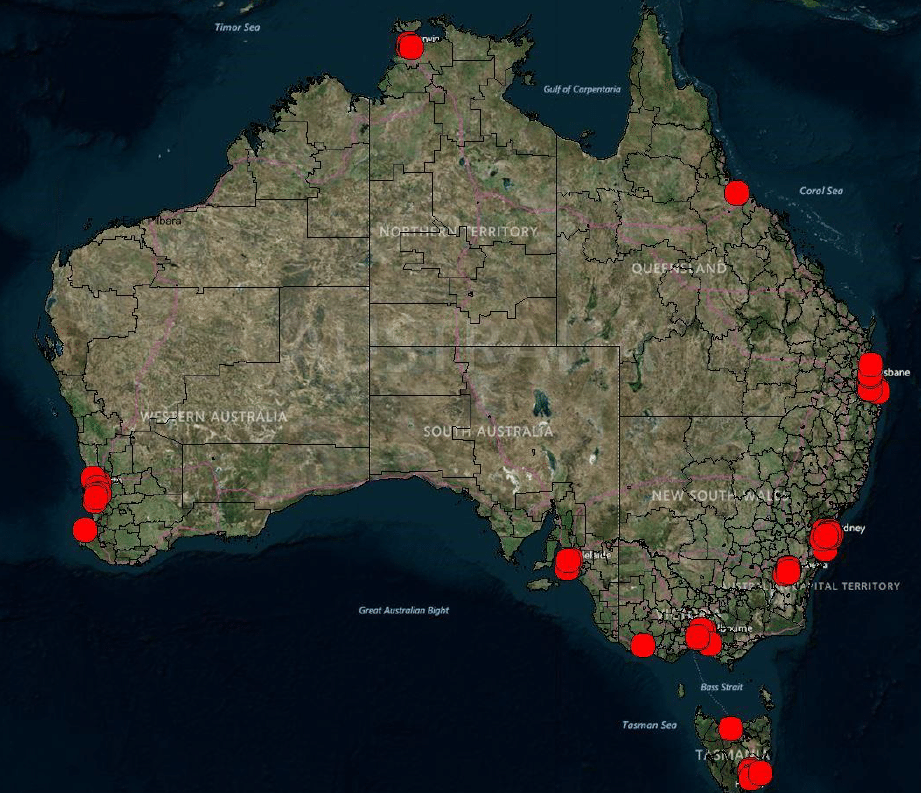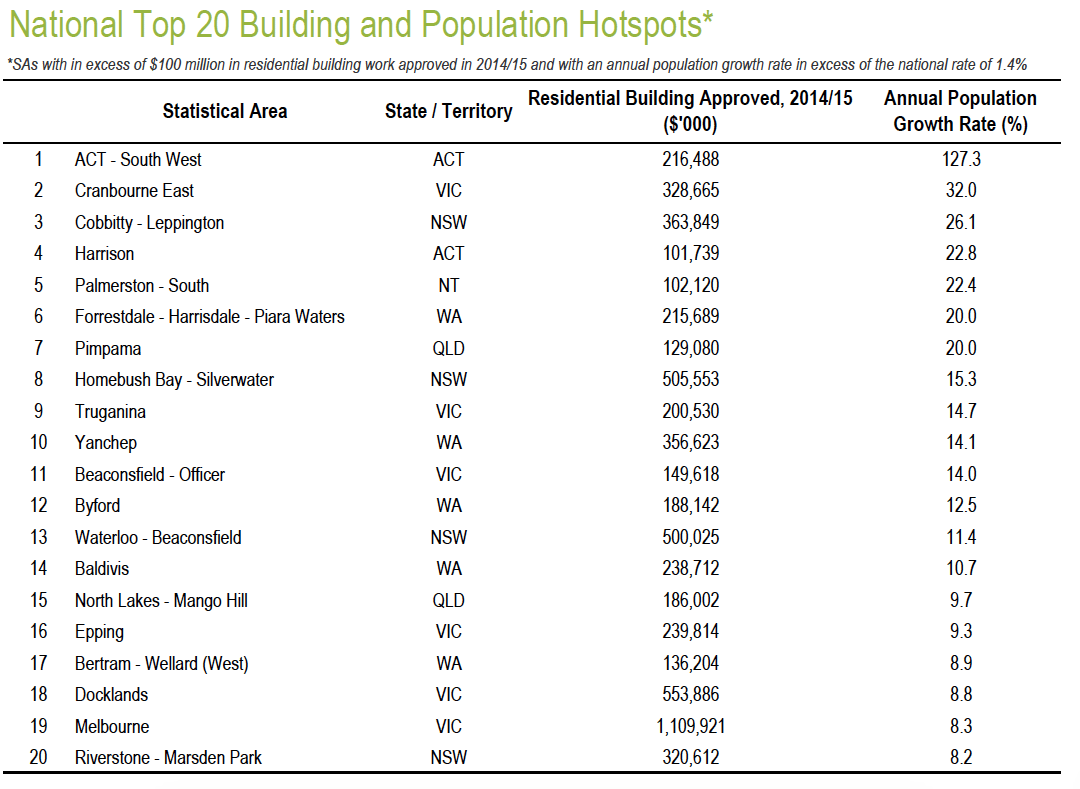Australia’s strongest performing markets for new home building and population growth have been revealed in the latest Housing Industry Association (HIA) Population and Residential Building Hotspots report.

“More than 220,000 new dwellings were commenced last year, so it’s no surprise there was a strong performance among housing hotspots across Australia,” HIA economist Diwa Hopkins says.
“Today’s report identifies a total of 602 hotspots spread right across Australia’s eight states and territories.
“Nearly all jurisdictions were represented amongst the National Top 20 Hotspots,” she adds.All jurisdictions apart from Tasmania and South Australia appear at least once in the national Housing Hotspots Top 20 league table:
6 top 20 hotspots are in Victoria
Western Australia contains 5 hotspots
4 are in New South Wales
Queensland and the ACT each contain 2 hotspots
1 is in the Northern Territory.
Nationally, a “hotspot” is defined as a local area where population growth exceeds the national average and where the value of residential building work approved is in excess of $100 million.
The final ranking of the hotspots is determined by their respective population growth rates.
Based on its performance during 2014/15, ACT’s South West area was the country’s number one hotspot again, with $216.5 million worth of new residential building approved and its population more than doubling.
In second place was Cranbourne East in Melbourne’s southeast, where the population increased by 32 per cent and some $328.7 million worth of new residential building was approved.
Rounding off the national top 3 was Cobbitty-Leppington in the southwest of Sydney.
This year’s Hotspots report again identifies a set of areas where momentum remains very strong according to latest data.
These areas are likely to perform well in next year’s rankings if the pattern of this year is anything to go by.
“In the final analysis, the fact that 10 of the top 20 hotspots are located in NSW and Victoria speaks volumes,” Hopkins says.
“These two states have been the engines of the strong upturn in new home building over the last few years.
“It’s also encouraging to see WA still perform strongly this time at the national level, considering the difficulties arising from the natural resources downturn.”


![]()
View all articles by Angela Young »
<!–
–>
Article source: http://feedproxy.google.com/~r/API_Property_News/~3/NBtequFUmAU/